
England, Scotland, and Wales
Mike and Judy Henderson
May 13-26, 2018
I'm going to leave the map of our trip a the beginning of each page so you have a reference as to where we are.

+++++++++++++++++++++++++++++++++++++++++++++++++++
5/16/2018 (Wednesday) We head to Levens Hall and Gardens today. The original house at Levens Hall was built about 1350 but it was significantly modified and enlarged in the late 17th Century.
But before I describe the visit, I want to comment on the stone walls in this area, and also in Scotland. The walls are called "dry stone walls" here in England and Scotland, and we might call them "stacked stone walls". No mortar was used in their construction. But they are not "found stones" - they are quarried stone. You can tell because the show faces of the stones are flat. Found stones would not be that flat, but would be more rounded from weathering.
The stone walls are used as fences to enclose or control the sheep on the various farms.
The next two photos show the stone "fences". The thing that these pictures cannot show is how many of these walls/fences there are in the country. You drive for miles and miles and these fences extend out to the horizon. The amount of stone that had to be quarried, cut, hauled, and laid is just mind boggling.
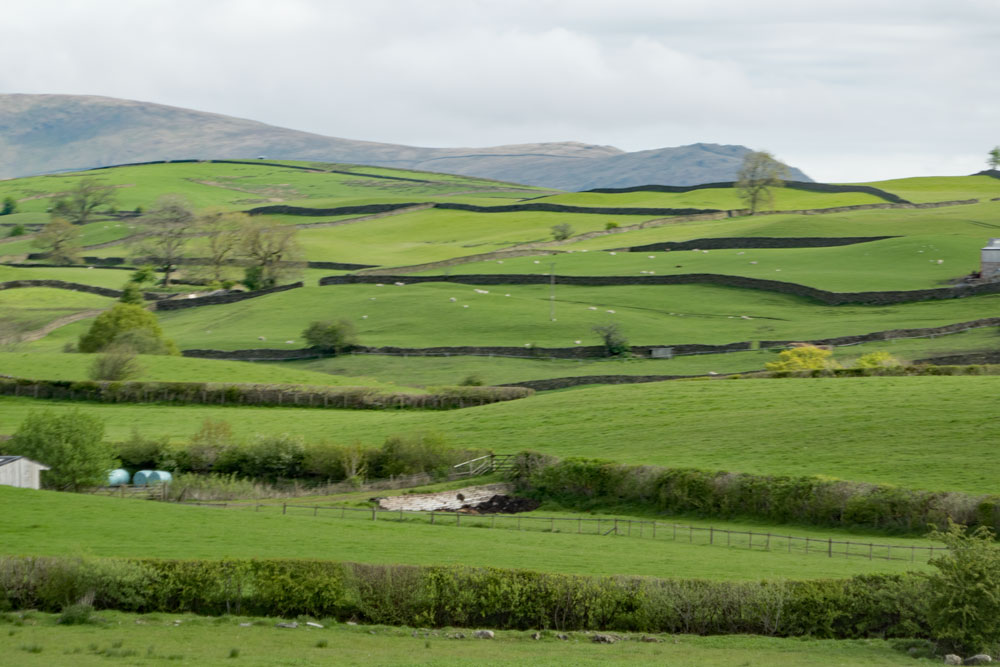
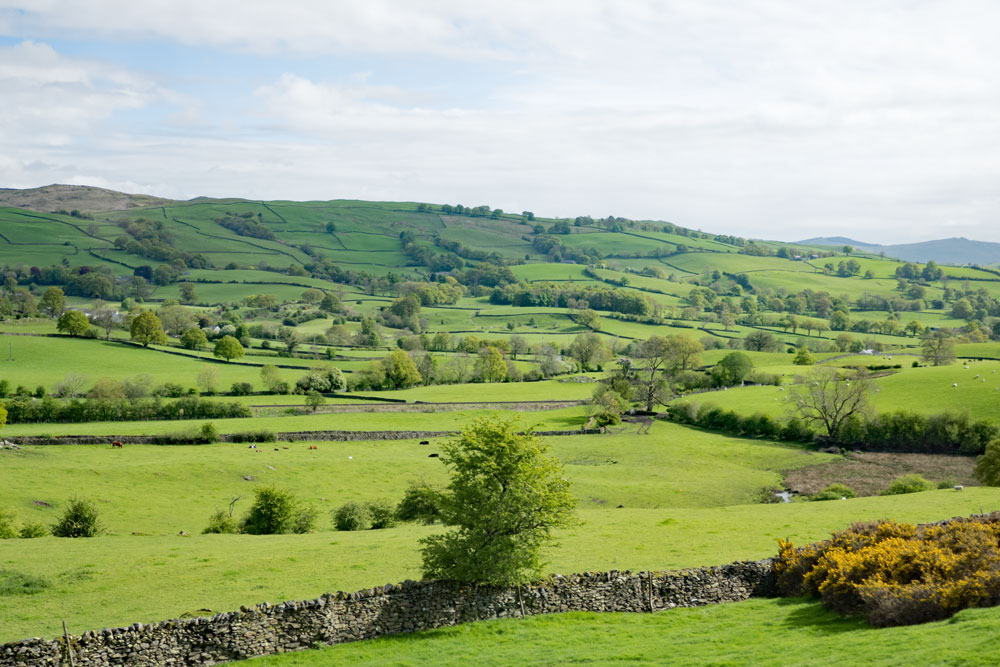
You can see in this picture that the walls are just a bunch of stones stacked up. The walls are thicker at the bottom than at the top, and are perhaps two feet wide at the bottom (maybe a bit wider). Anyway, there is a tremendous amount of stone in all those walls.
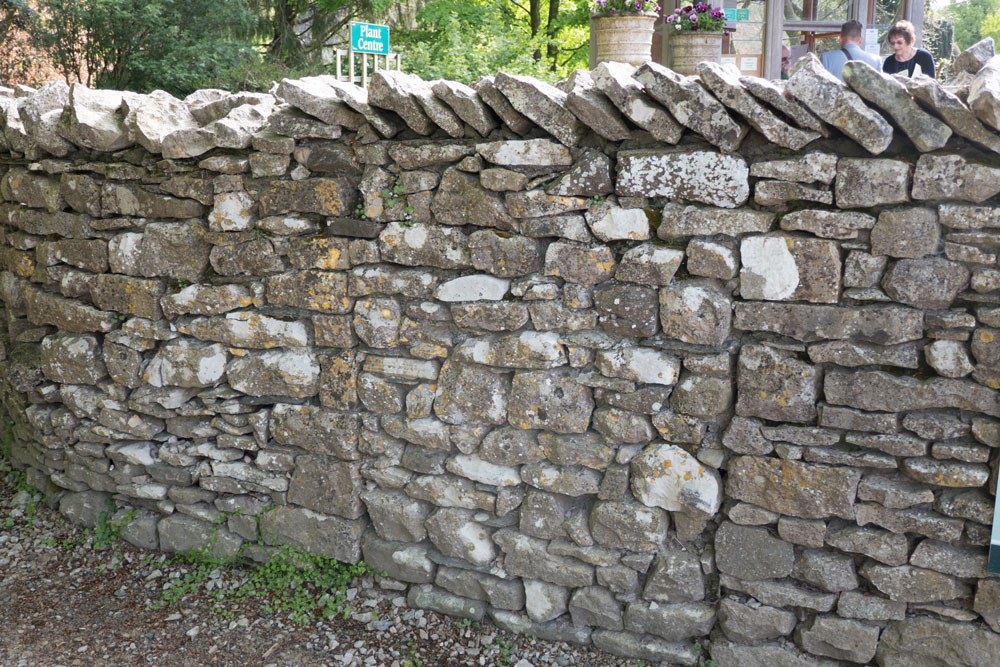
But back to Levens Hall. Here's a view of the outside of the manor house. We took a tour of the house but photographs were not allowed
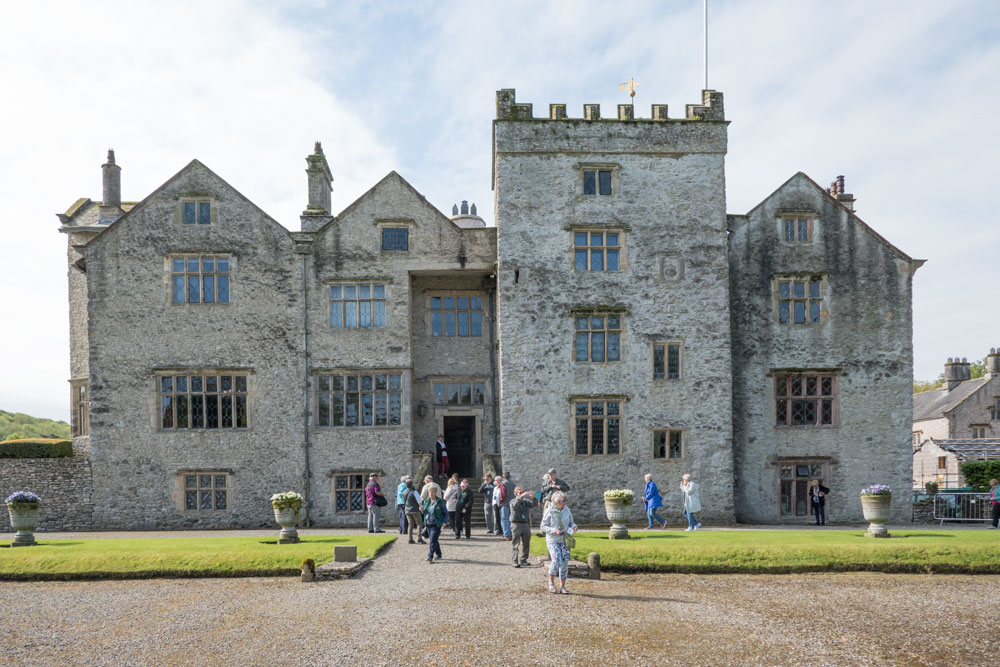
After the house tour, we were given a tour of the topiary garden by the head groundskeeper.
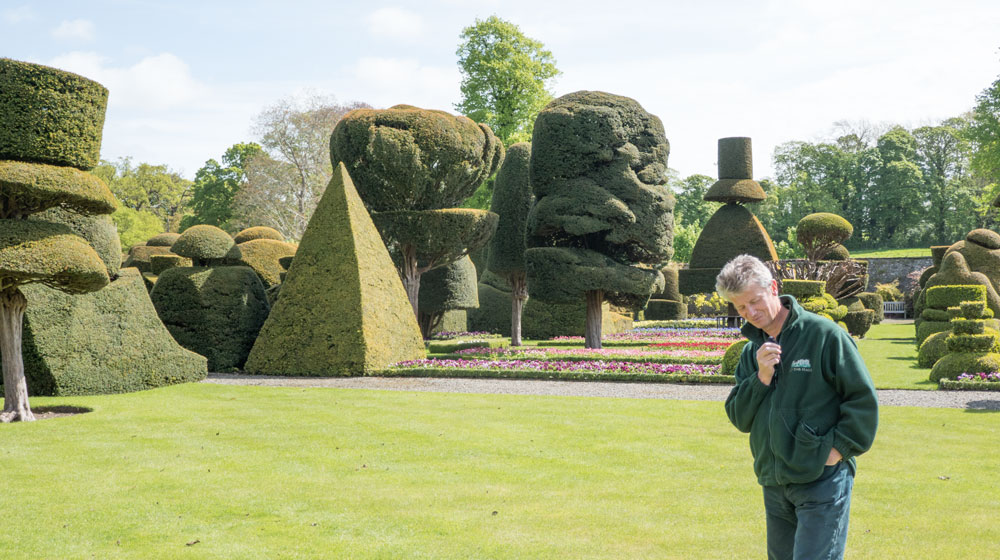
These views show some of the other topiaries in the garden. There were many, many more.
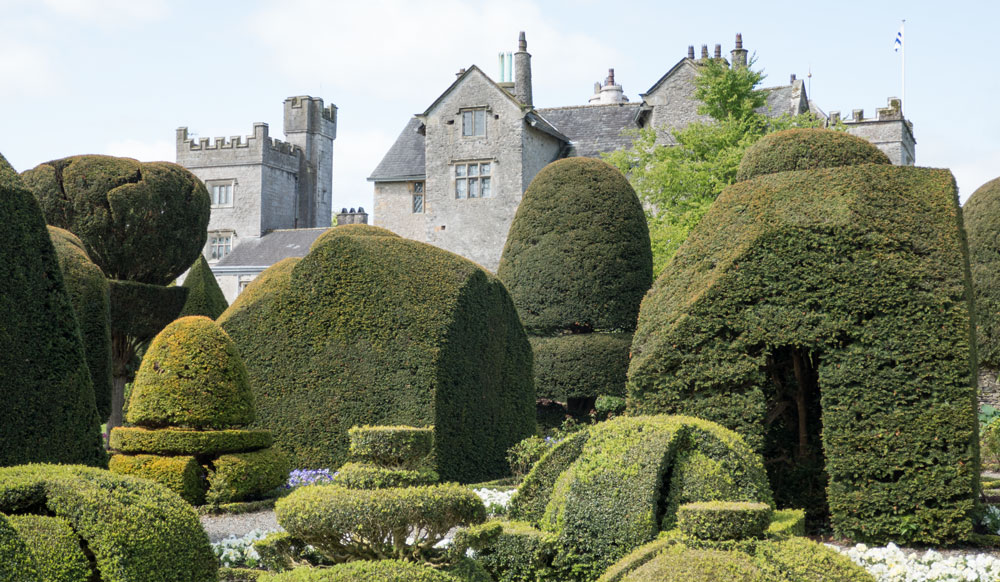
The head groundskeeper took the group through the garden.
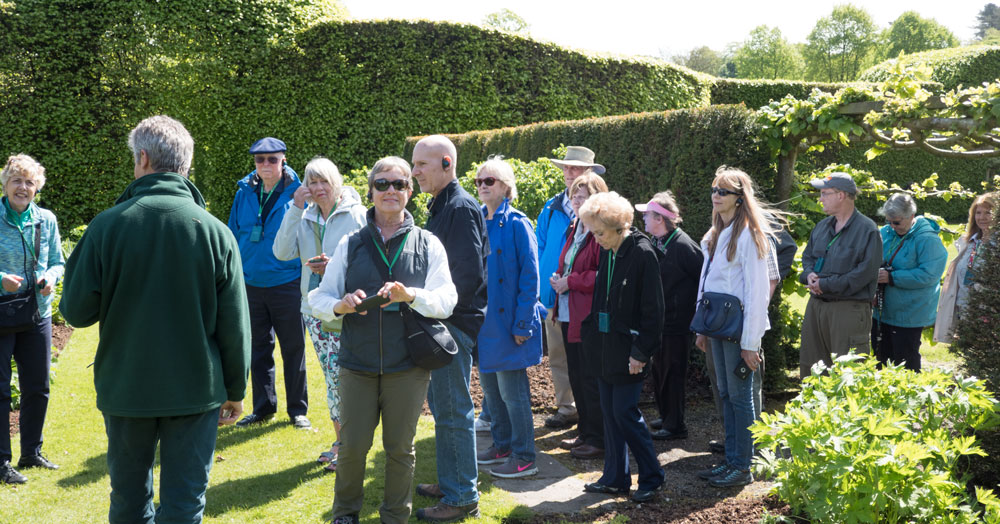
I discovered that he kept bees on the property and talked him into showing me the apiary. Here are a couple of hives - they're plastic and different than the ones we use in the US - although he said they were 10 frame bodies.
The groundskeeper is a very competent beekeeper. He grafts his own queens and had some queens "in process" in preparation for making some splits.
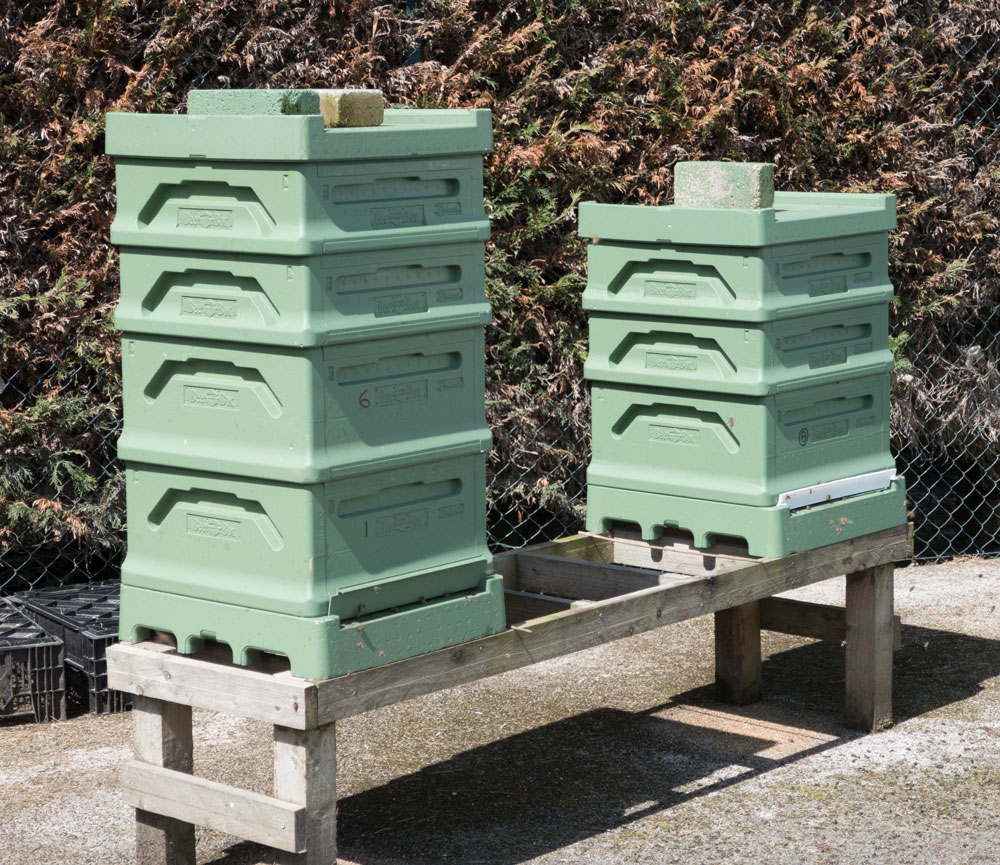
After the garden tour, we had lunch in the restaurant that is part of the manor. One "funny" thing was this sign I found in the men's room. The British are very polite, but to ask a person experiencing a heart attack to go to the gift shop was a bit much.
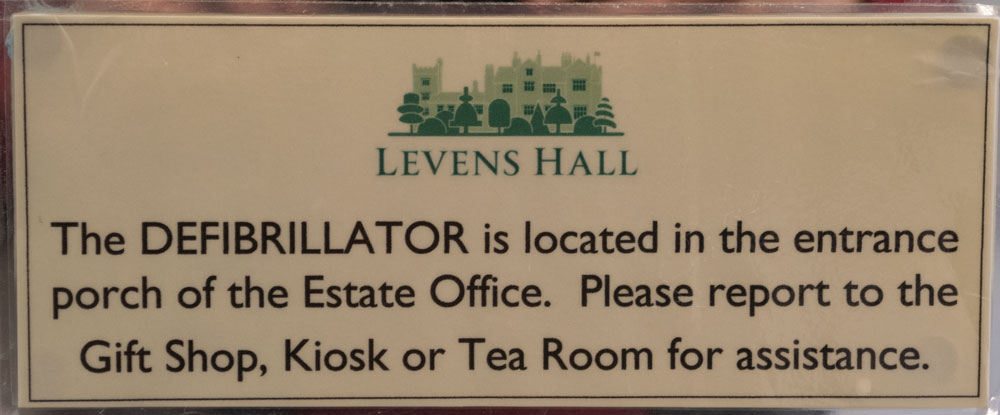
I haven't talked about the narrow secondary roads in this area of England. Cars coming towards the bus can barely squeeze by. But on our return from Levens Hall we encountered another bus - and it is impossible for two buses to fit on the road, except in a few places.
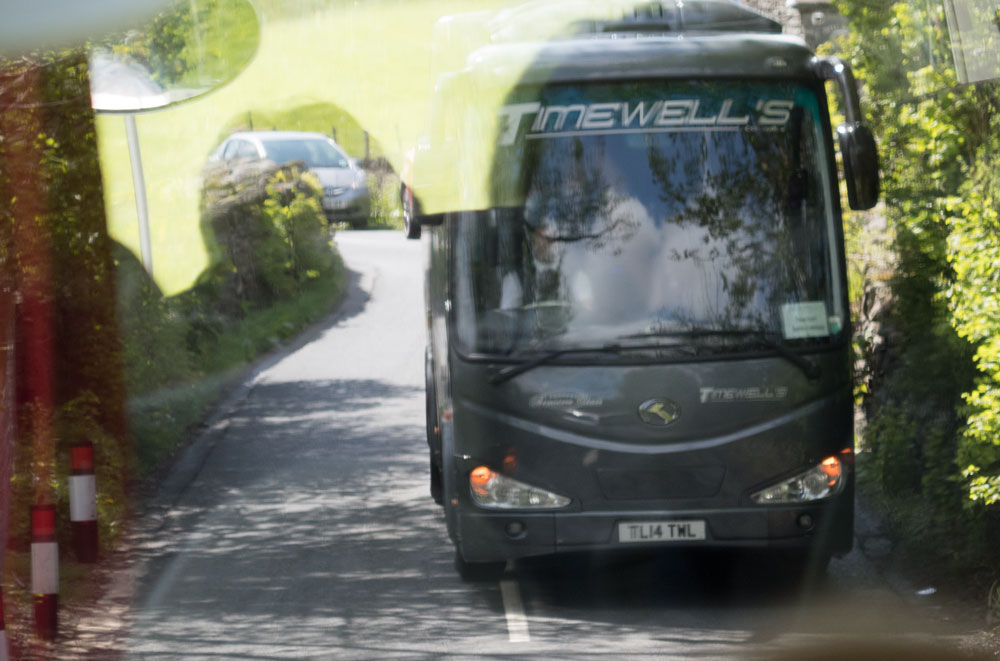
It involved a lot of backing up of the bus in front of us, in addition to the cars that had backed up behind the bus, but the two bus drivers eventually managed to get past each other. It took about 30 minutes.
Shortly after the bus encounter, some of us got off the bus to walk a path back to the hotel. The path led through some beautiful country.

And eventually the path went by a field where the ewes were grazing with their lambs. This is National Trust land and the sheep are Herdwick sheep, some of 25,000 in the country. The National Trust received a huge bequest of land, approximately 4,000 acres, from the estate of Beatrix Potter, with the stipulation that the sheep herd be preserved. She had gone to great efforts to save this breed of sheep from extinction, which had nearly happened. Their meat is tough and not tasty, and their wool is very scratchy and cannot be dyed, hence they were deemed unusable. Then it was discovered that they are one of the only animals which are not sickened by eating the invasive weed fiddlehead bracken, and that their wool has a natural tendency to be fire resistant. It is now used in industrial carpeting, and the grey color is useful in not showing wear and stains. The Herdwick sheep were saved.
Here's one lamb getting a snack. The color you see on mom is put there by the sheep herders to mark a sheep when it is given an immunization (for example). In that way they can tell which sheep has had certain actions performed on them.
[Edit] I later learned that sheepherders often run their sheep on the mountains mixed with the sheep of other sheepherders. To tell the sheep apart, they use a color on the back of the neck of the sheep. For example, one herder may mark all of his sheep with blue, while another might use red. The colors were established long ago between the ancestors of the present day sheepherders.
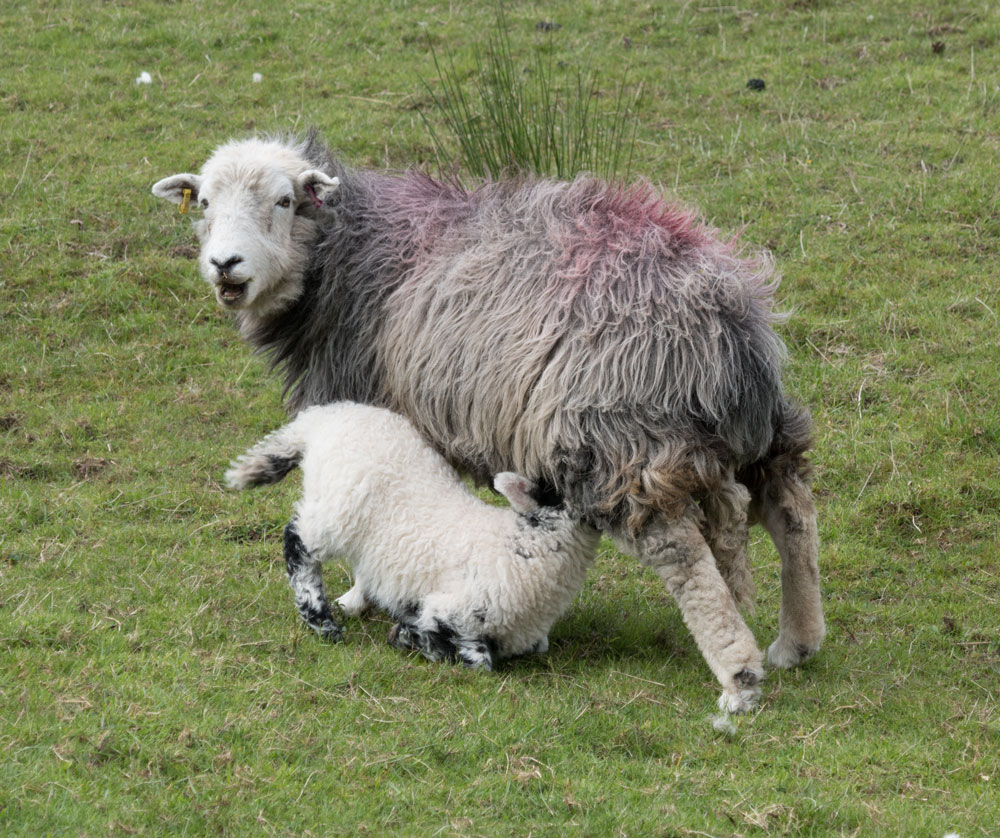
And a little black lamb. Baa, baa black sheep, have you any wool? The lambs lighten in color as they get older.
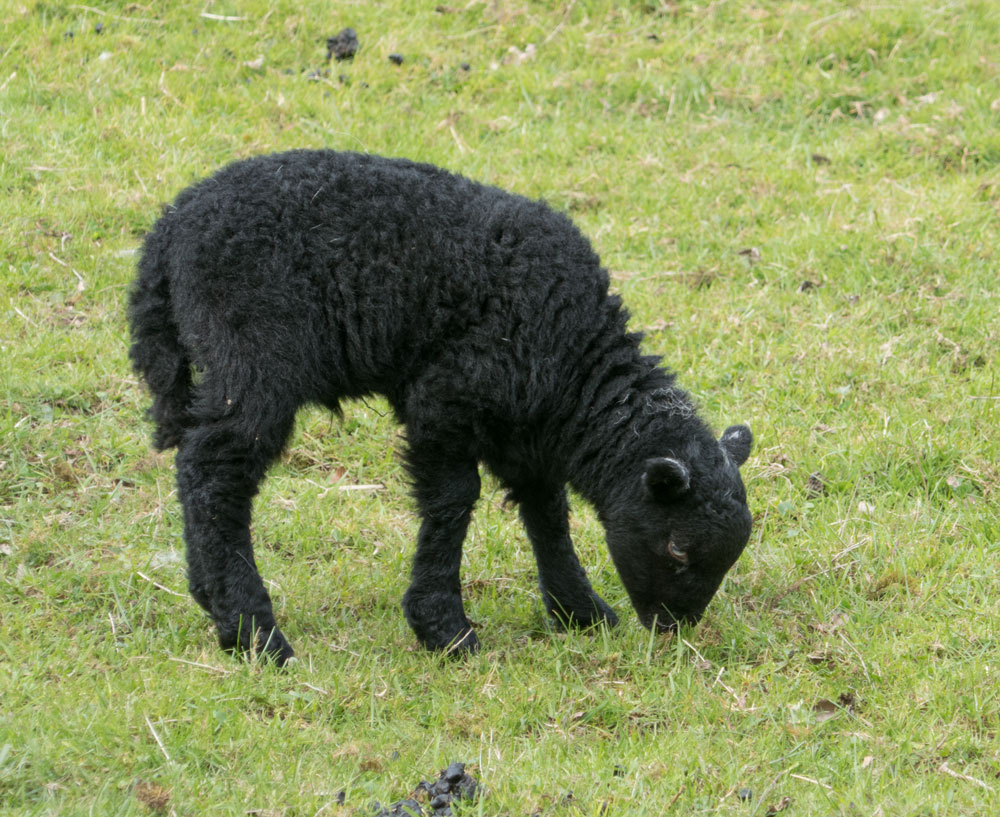
Before dinner this evening, we went to a sheep dog demonstration. The country had an outbreak of foot and mouth disease, and very stringent laws have been enacted regarding the movement of sheep from one area to another to prevent the potential spread of the disease. So the people who were putting on the demonstration could not bring sheep for the demonstration but use ducks. It was an example of duck herding:-)
Here's one of the dogs working the ducks. They are Indian Runner ducks and are poor flyers, but have one clipped wing as a precaution.
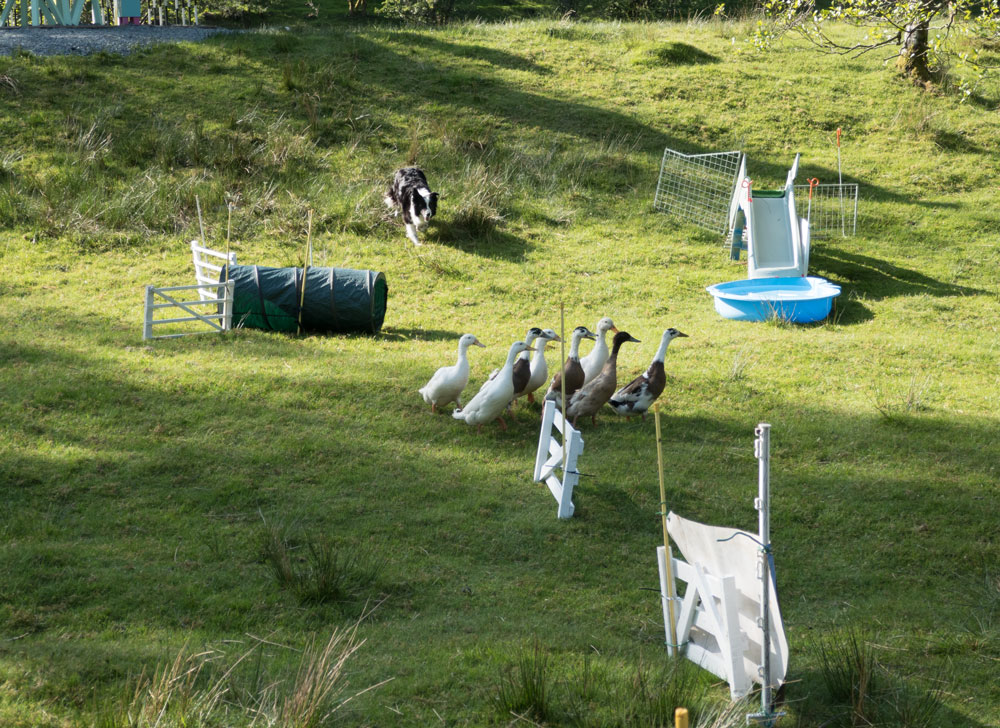
Responding to the whistles of the handler, the dog could move the ducks anywhere the handler desired. Here the dog is getting the ducks to go through an obstacle. It was an interesting demonstration.
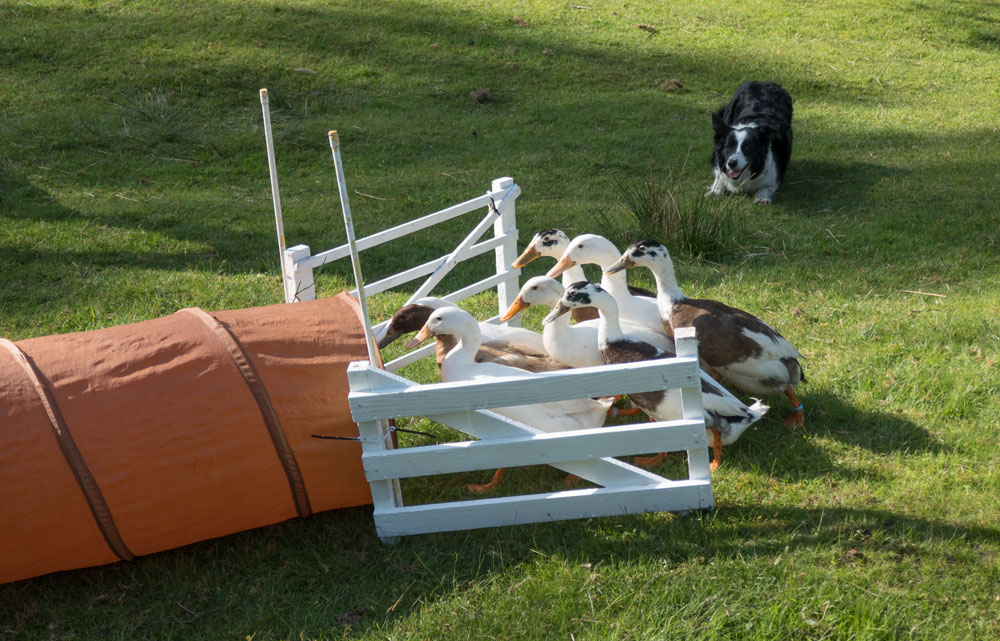
Here's a close up of one of the dogs. He's happy and focused.

After that, we went to a traditional pub for dinner.

Pubs have "trivia games" and Tauck organized one for the Tauck guests. We played as teams by tables. Here's our table.
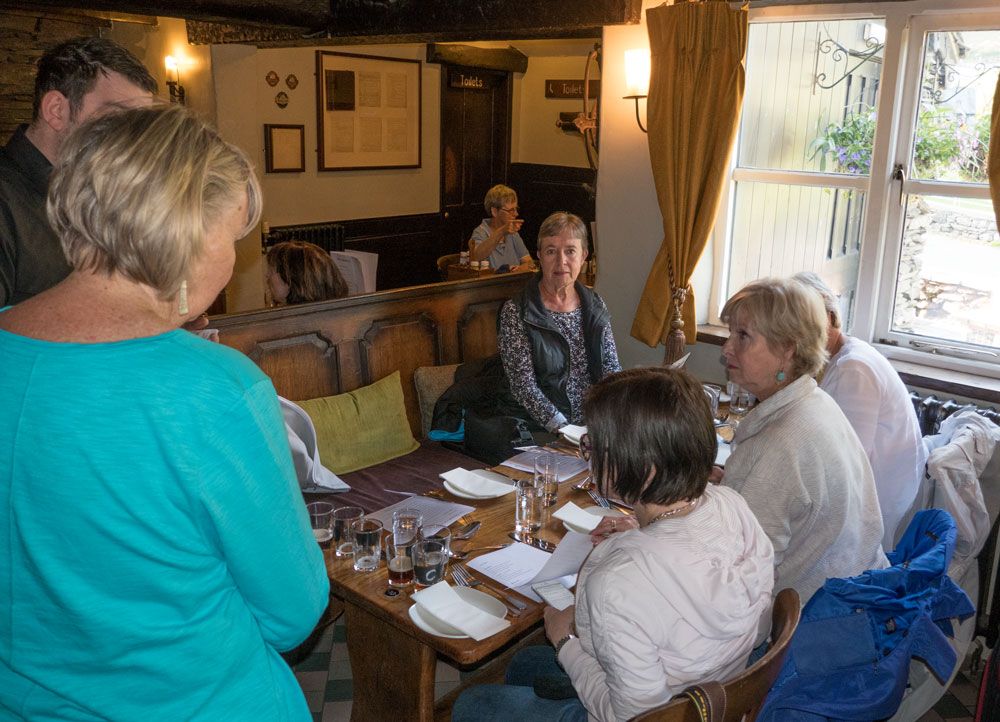
We tied another table with six correct answers out of ten so they asked us a playoff question to decide the winner. We were way off with our answer, but the other team was even further off, so we won.
The question was "How high is Big Ben in feet?" We guessed 92 feet but the other team guessed 60 feet. The correct answer is 315 feet!
++++++++++++++++++++++++++++++++++++++++++++++++++++++++++++
5/17/2018 (Thursday) Today we head to Chester, a walled city in England, just on the border with Wales. We entered the city by the east gate, where the famous EastGate Clock is located.
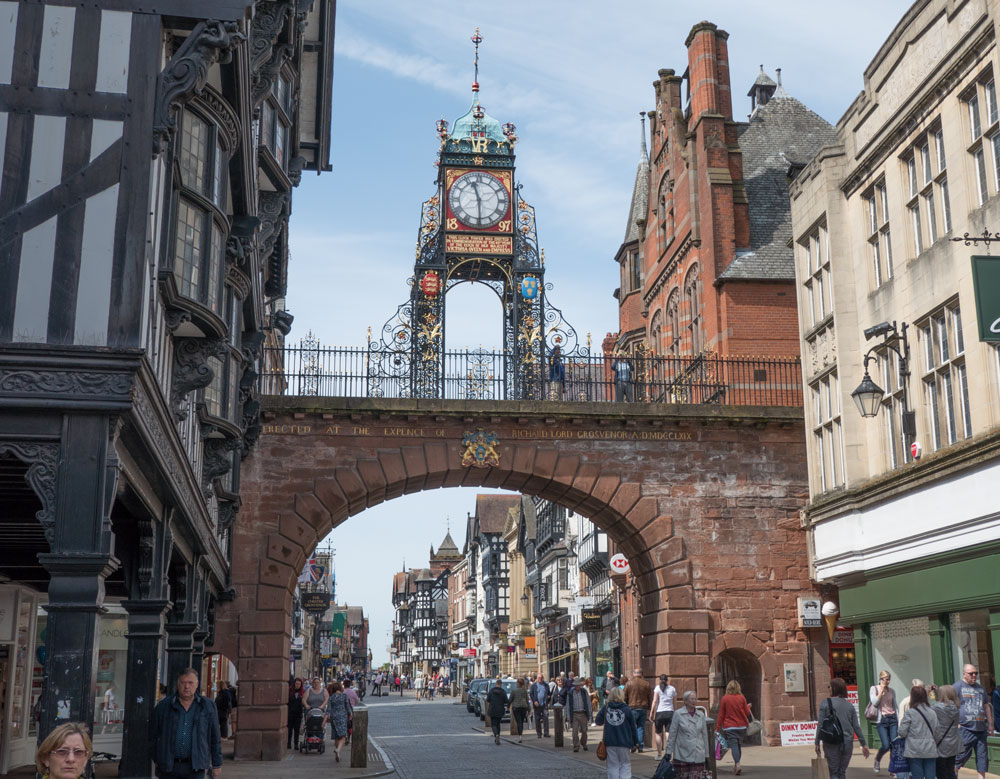
Here's a bit closer look at the clock.
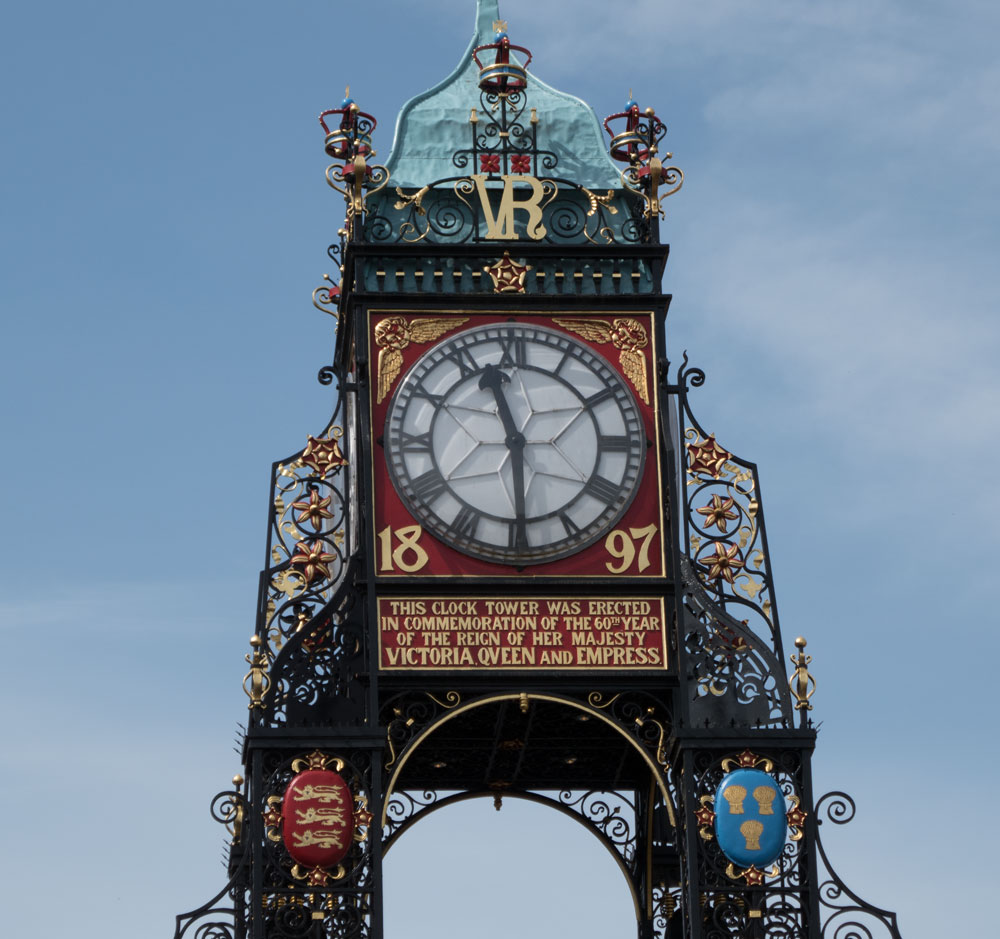
We climbed the stairs to the top of the wall and walked toward the Northgate. We passed Chester Cathedral, which we will visit later.
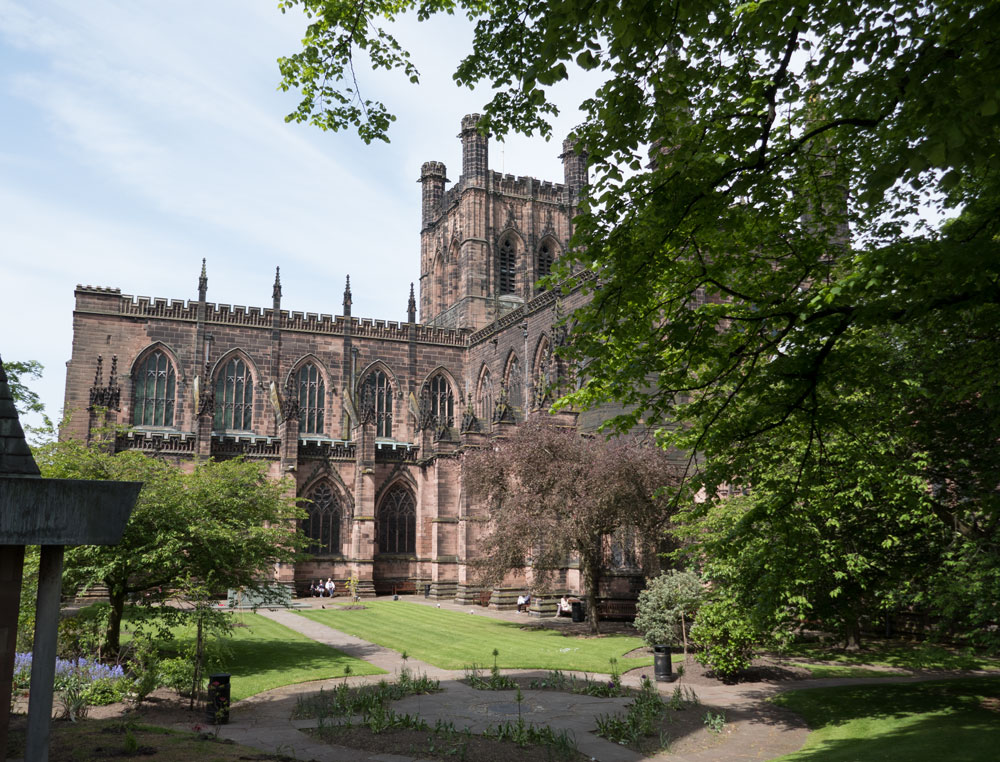
A bit further along, we came to the Phoenix Tower, also called the Charles Tower, because King Charles viewed the defeat of his army from this tower. I didn't get a good picture and took this picture from the Wikipedia.
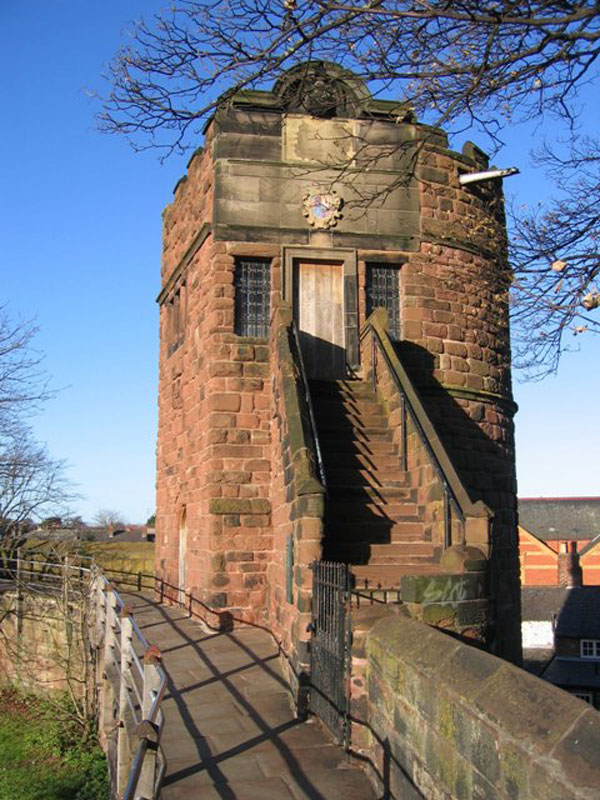
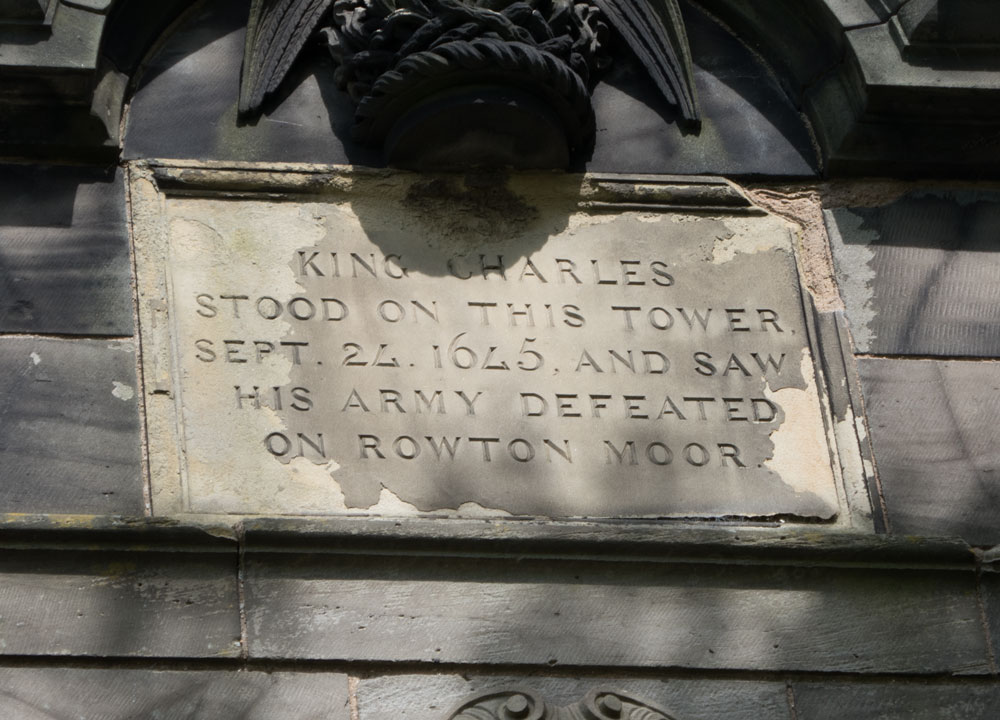
When we left the wall, we went to Chester Cathedral.

It's a large cathedral.
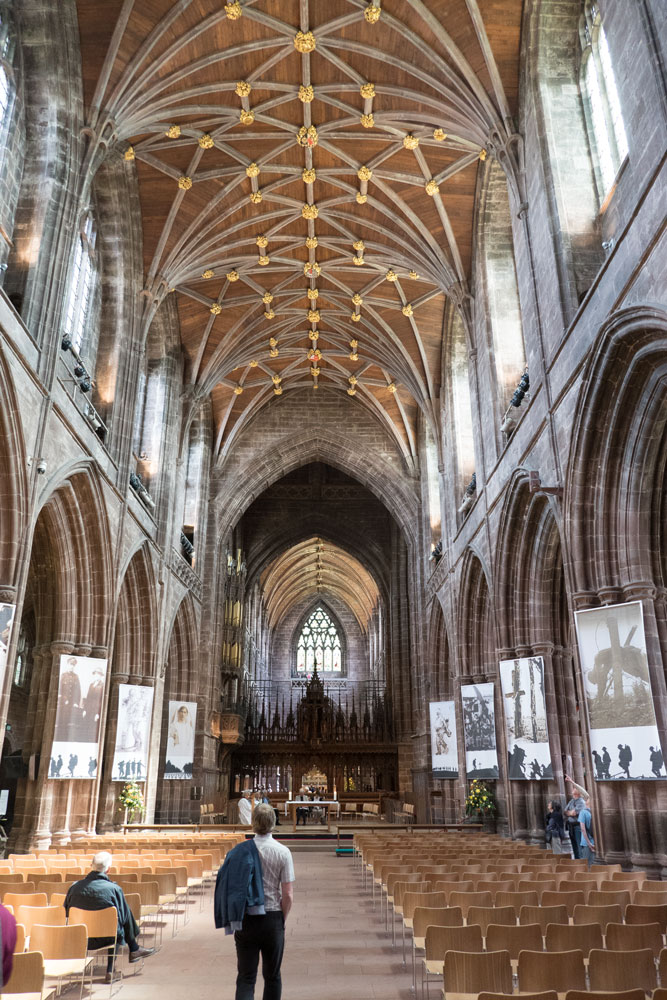
There appear to have been quite a number of burials in the cathedral, with memorials like the following on the walls or in the floor.
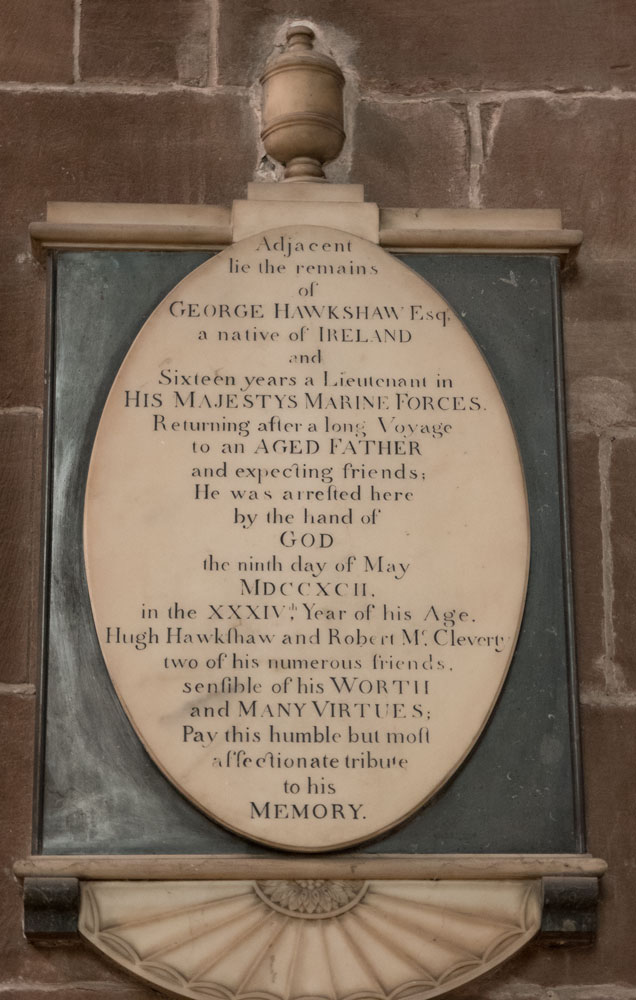
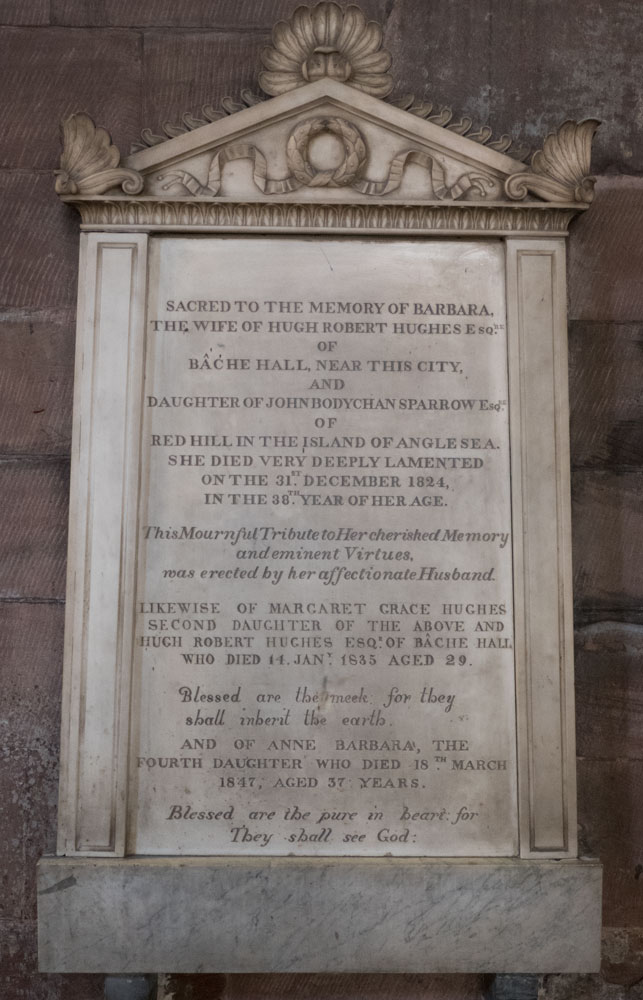
There are also some tombs in the church. When I see tombs in a church I'm always reminded of a poem by Robert Browning.
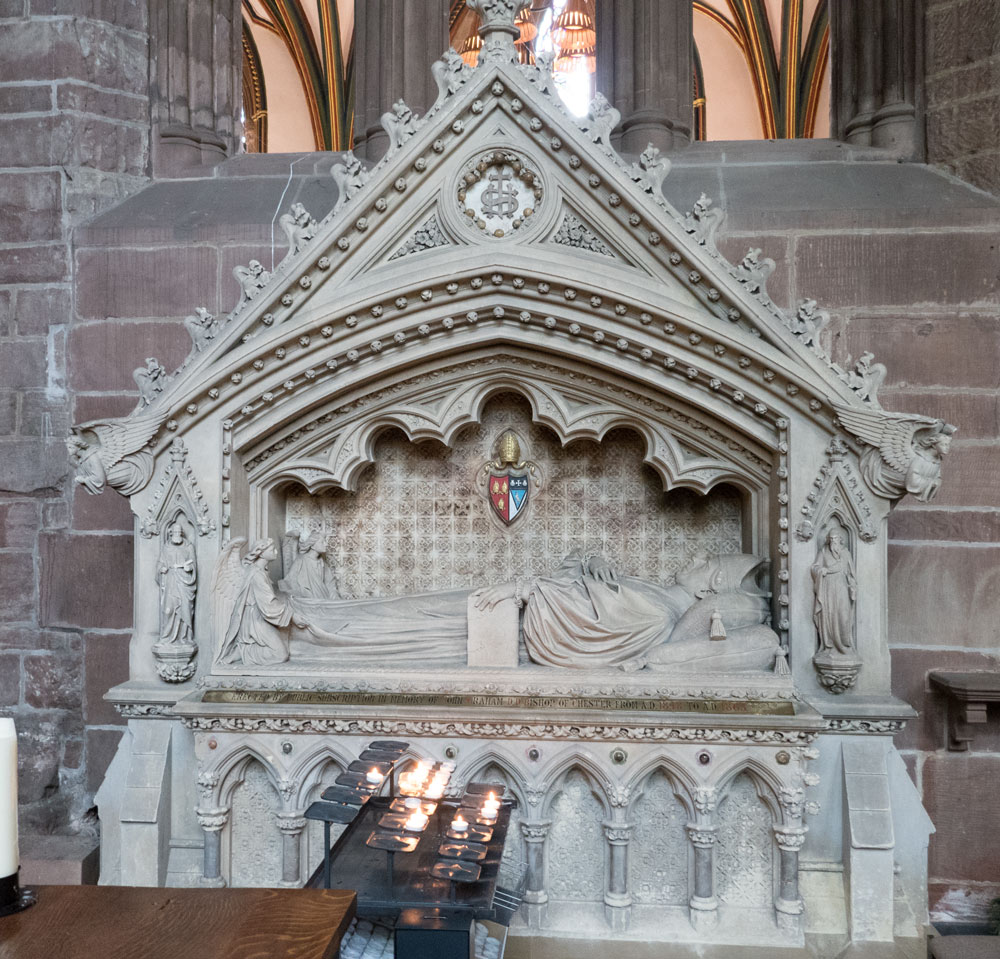
This one is placed just at the foot of the organ pipes so he gets to listen to the music every Sunday.

After we left the cathedral we went to a restaurant called Duttons. In the picture below, you can see Judy (pointed to by the yellow arrow) talking with some people at a table there. It was a British couple whom we met on the Regent cruise of South America in 2017. Small world.

Here's a shot of the couple. They live nearby and had come into town for lunch.
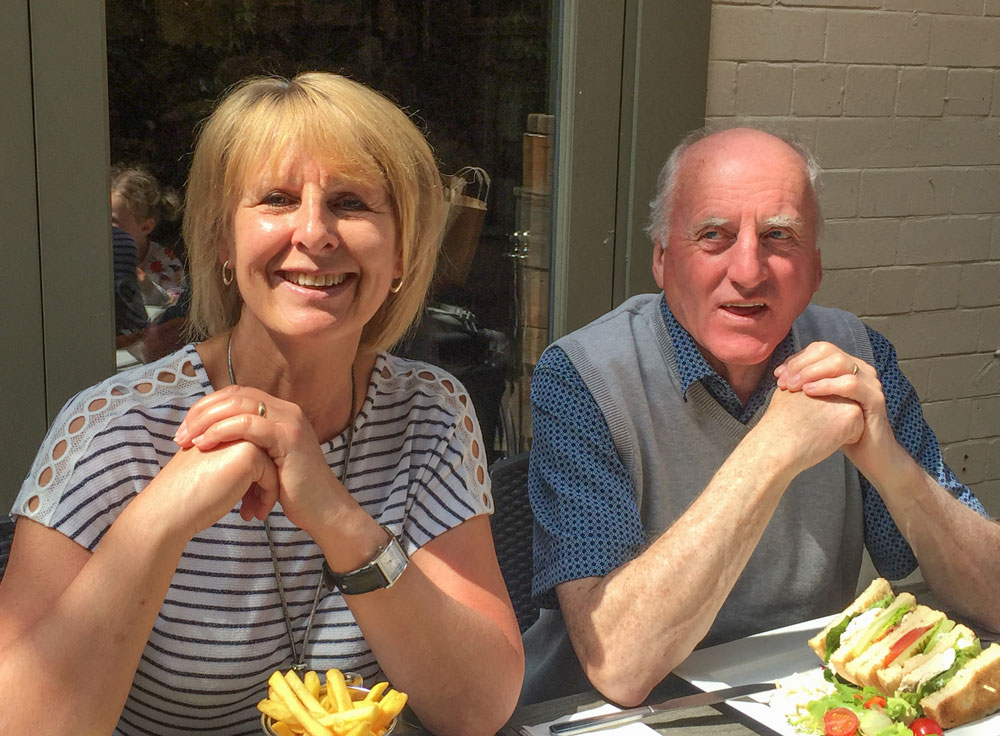
We met the bus about 2pm and continued on to Conwy where we checked into the Quay Hotel and Spa. I'm guessing that because of the size of our group, they had to assign some of the nicer rooms to a few members of the group. Judy and I lucked out and got a suite, which we're enjoying. Next time, someone else will get the luck.
We were free until dinner time when we boarded the bus to to the Bodnant Gardens Food Centre for a "Welsh Food Experience". The Bodnant Gardens is owned by the National Trust. I don't know if this food centre at the gardens is owned by the National Trust.
We went into a demonstration room where we were first addressed by a very nice woman who told us about Welsh food and its preparation.
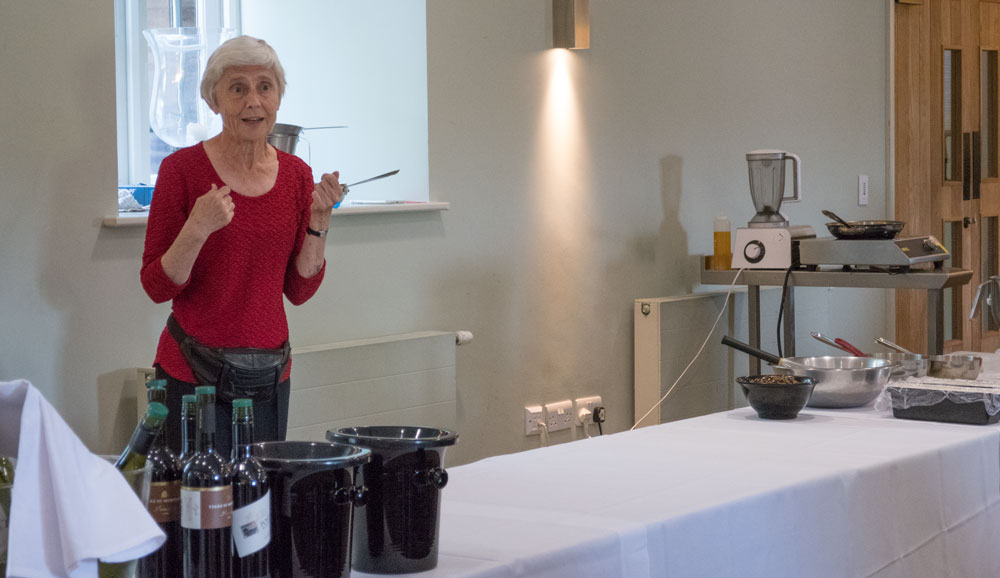
Then, one of the chefs demonstrated how to prepare each of the dishes we were going to have tonight. Here he's demonstrating how to make potato leek soup.
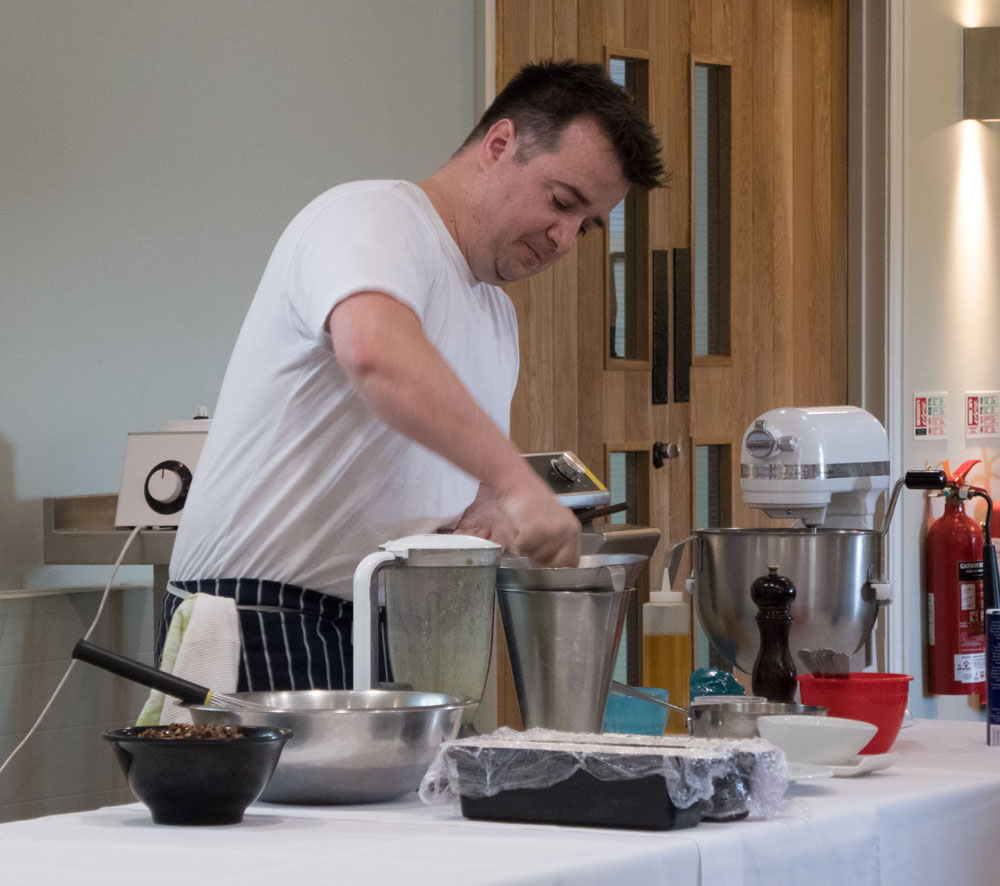
Between each of the dishes the chef demonstrated, the sommelier discussed one of the four wines available to us, and we tasted each one. It was a nice arrangement because it allowed the chef to organize to demonstrate the next dish while the sommelier was discussing one of the wines and we were tasting it. They bounced back and forth until all of the dishes and the four wines were demonstrated/tasted.
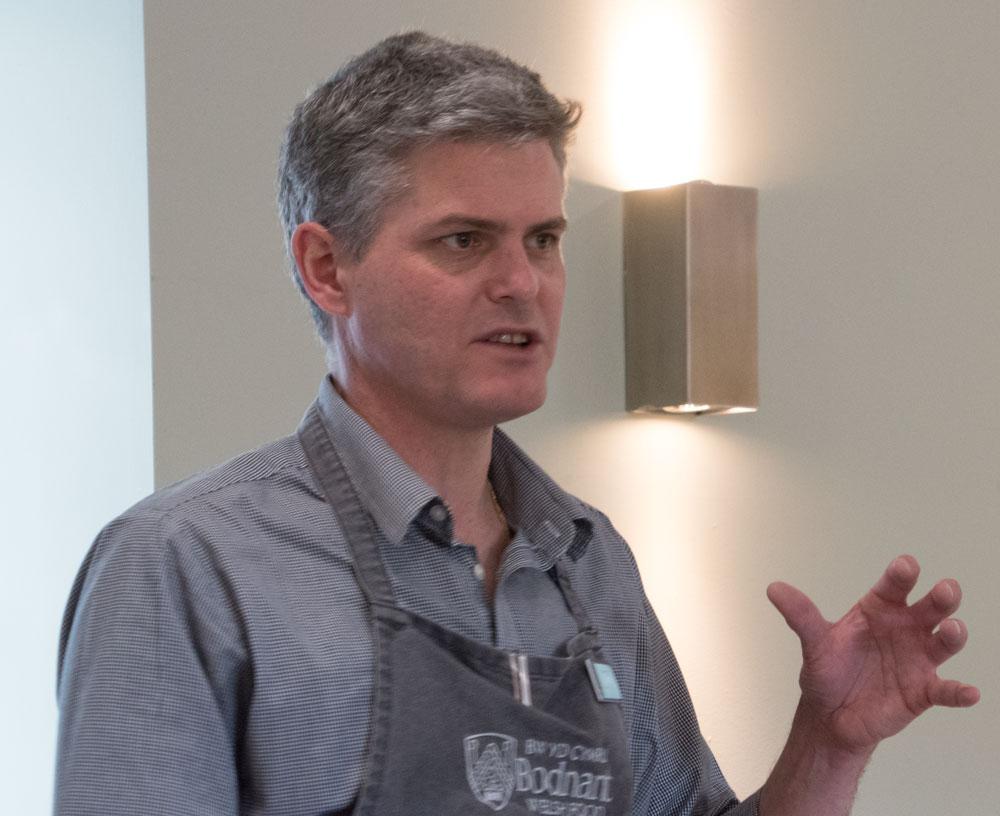
Then we went into the dining room and had a dinner of the dishes demonstrated. We're down at the end of the dining room in the next picture.
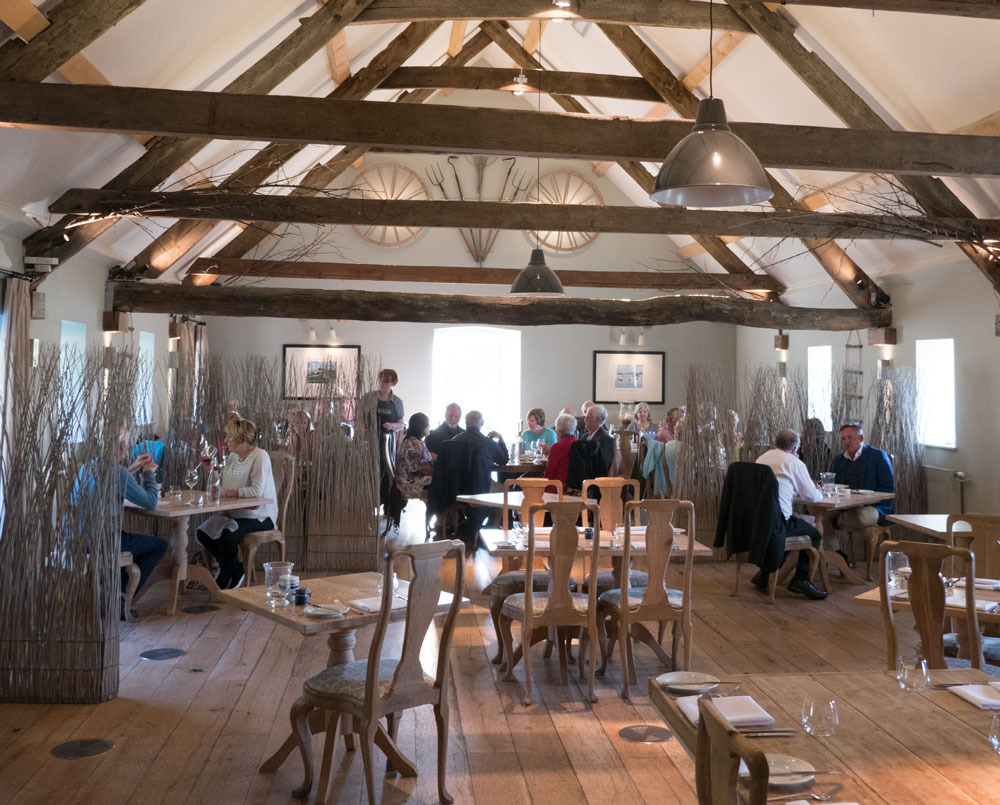
After dinner, it was still light and I happened to look into one of the courtyards at the facility. To my surprise, the Welsh National Beekeeping Centre is located in the facility. Unfortunately, they were closed so I couldn't go in to see what they were up to.
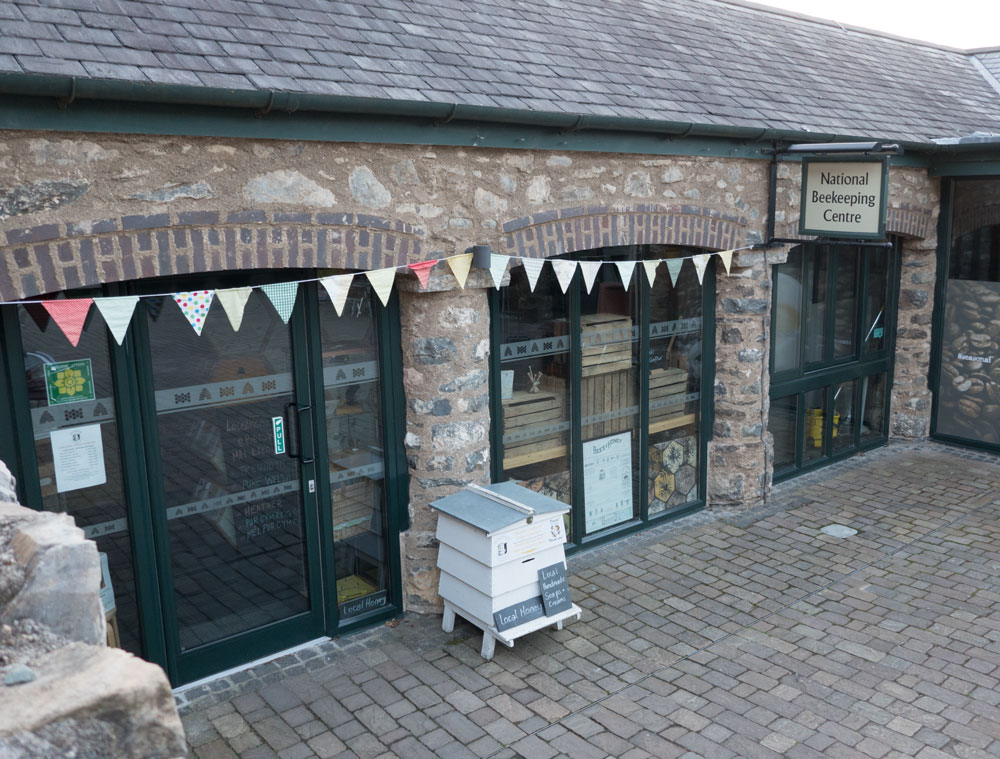
With that, we bused back to the hotel - the end of another day.
You can see more of our adventure here.